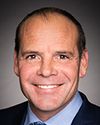Okay.
I would like to make that request, Mr. Chair. I don't know if we need to vote on it.
Yes, I think that would be very interesting information, because obviously there's a vigorous debate out there about the risks of the P3 model. We see projects like the LRT in Ottawa, which has been an abject failure. There are plenty of examples across Canada of where the private sector has really messed up these big capital projects. I think it's in the public interest here. When we're talking about the future of passenger rail in Canada, we need to put public interest right at the heart of that.
I understand that this is really a question for the minister, because it's more political than operational, but I think you know what I'm getting at here. The assumptions that go into those assessments are vitally important.




